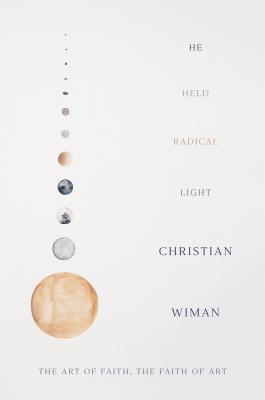
He Held Radical Light – The Art of Faith,The Faith of Art, by Christian Wiman
Wiman is one those I call pie men – he’s had his hand in too many things over the span of his years to identify him with any one mental discipline – and yet he’s no DaVinci either. He never hangs around a given discipline long enough to be proficient in it. Still, he’s no superficial type. He’s a searcher, a searcher for meaning, and toward that end he bounces back and forth like a tennis ball between the arts and religion. He’s been an editor, a writer, a fan of Mary Oliver and others, and if he’s what he seems in this book, he tends to keep life at arm’s length.
I’ve known several like him, I think, and they’re as necessary to the world as the various lauded people of the year. Theirs is the gift of insight over the gamut of society. Meaning, in this fragmented world we inhabit, he has a unique view of the world, seeing it and us with fresh eyes.
This perspective of his seems to have taught him two things: First that art and religion are separate things, despite efforts by the mavens of religion to conflate the two. And second that religion is an unfulfilled project. Because since perhaps the Protestant Reformation, religion has been an intellectual affair, trying to understand divinity through concepts, the argument and deterministically paced nature of the intellect, which all but forbids direct contact with divinity. Small wonder, then, that world religions are rife with intercessor models unintended by Jesus, Mohammed, Buddha, Krishna et al. What Wiman seems to be coming to ever so slowly is that art can’t fulfill religion, nor can faith in this intercessor-mediated concept modern religion has adopted. What religion’s fulfillment is, then, is direct contact with the divine. However you see that happening. This throws reality into the realm of relativism, precisely where science places it, something that’s anathema to modern (and I mean centuries-old) religious thought. What eschewing relativism is really all about, then, is control. Control of ideas, indeed of reality itself. Expending so much time and energy coming around to the consequences of intercessory-based faith will tell you all you need to understand about the hold this quaint form of religion has on world society. And it tells you even more about the value of art in understanding the links between humanity and divinity, of why there’s so much effort put into attempts by religion to co-opt art.
My Rating: 17 of 20 stars
Visit our website here, where you’ll find more on our books. There’s also a Facebook fan page or two if you can find them. On either you’ll discover more on writing and reading ideas and events that matter to us — and possibly to you.
Leave a comment